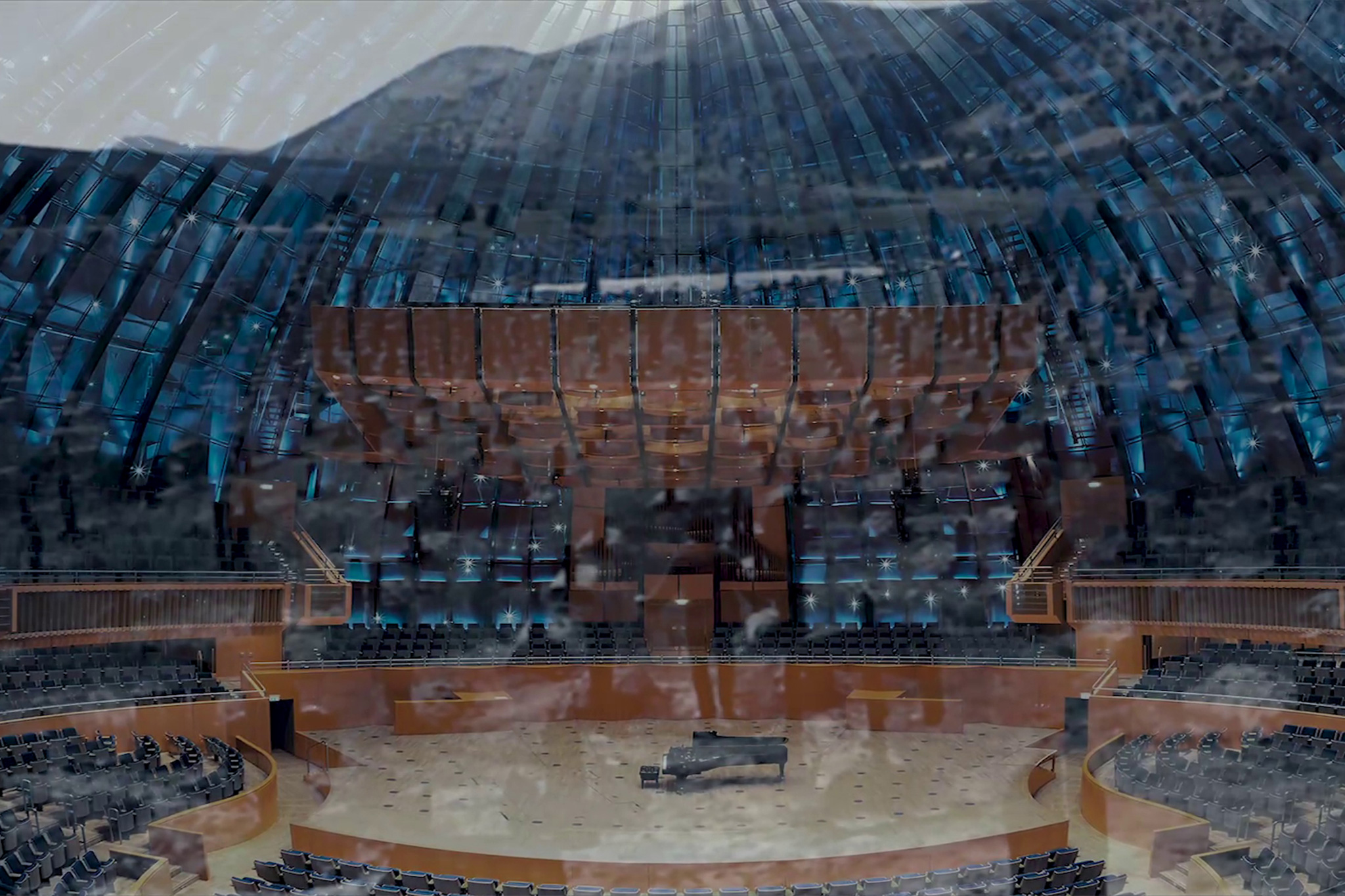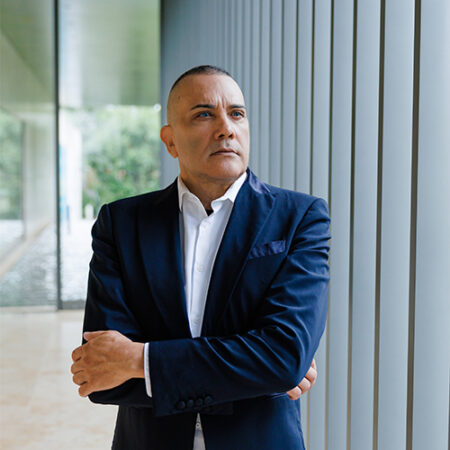
17 Jul Interviewing Mark Rodrieg | Art and music in one soul
ABOUT
Mark Rodrieg is a multi-dimensional artist (flutist, composer, video artist) whose performances have been presented in concert venues, museums, curated art-spaces and radio stations in North America, Europe and Asia. Rodrieg is also a former Naval Officer, seasoned international corporate lawyer and avid sportsman, having competed in international competitions for several years as part of the USA Fencing Team. In spite of this background, he chose to follow his artistic goal in life, making room for music and video art.
ABOUT
Mark Rodrieg is a multi-dimensional artist (flutist, composer, video artist) whose performances have been presented in concert venues, museums, curated art-spaces and radio stations in North America, Europe and Asia. Rodrieg is also a former Naval Officer, seasoned international corporate lawyer and avid sportsman, having competed in international competitions for several years as part of the USA Fencing Team. In spite of this background, he chose to follow his artistic goal in life, making room for music and video art.
ARTISTIC DEVELOPEMENT
Hi Mark! Let’s start at the beginning. Your artistic career started well before the making of your videos, when you started working in an orchestra as a professional flutist. Tell us a bit about that period: how did you discover your love for music and how has it evolved over time?
Yes, in my early years I trained with one of the greatest flutists of the 20th Century (the inimitable Albert Tipton) and subsequently I was Associate Principal Flutist of the Aspen Festival Orchestra, where I played with many amazing conductors and musicians. Prior to that period, when I first heard what I would later come to understand as serious classical music I was simply awed by it. It was immediately obvious that classical was vastly more complex and varied, relative to pop music, however entertaining pop may be, so I wanted to do classical. That original awe only increased with significant formal studies. With this exposure and working with many leading artists and composers, aside from the challenge and joy of playing very special music, I had the opportunity to discover the incredible theoretical aspects of the art form and its related historical development. In short, it has been a life-long love affair.
ARTISTIC DEVELOPEMENT
Hi Mark! Let’s start at the beginning. Your artistic career started well before the making of your videos, when you started working in an orchestra as a professional flutist. Tell us a bit about that period: how did you discover your love for music and how has it evolved over time?
Yes, in my early years I trained with one of the greatest flutists of the 20th Century (the inimitable Albert Tipton) and subsequently I was Associate Principal Flutist of the Aspen Festival Orchestra, where I played with many amazing conductors and musicians. Prior to that period, when I first heard what I would later come to understand as serious classical music I was simply awed by it. It was immediately obvious that classical was vastly more complex and varied, relative to pop music, however entertaining pop may be, so I wanted to do classical. That original awe only increased with significant formal studies. With this exposure and working with many leading artists and composers, aside from the challenge and joy of playing very special music, I had the opportunity to discover the incredible theoretical aspects of the art form and its related historical development. In short, it has been a life-long love affair.
You told us that your studies were not close to the artistic world, quite the contrary! You studied classical music, then law and practiced as a lawyer in important American firms. Then France: more music studies, more intimacy, more privacy and a life dedicated to personal development. Where did the push that made you choose art come from?
You are right – my degree programs included significant studies in music and a Juris Doctor at Columbia University. I was also able to take (as electives) numerous film-studies classes (a field closely related to video art) at all three of my universities. In our last discussion I only meant that the respective art worlds of classical music and visual art are almost entirely separate. Part of my interest in developing a practice in video art is about this separation and resultant limitations as well as the desire to create video artworks as a truly combined art form of sound and images. My concept of this combined art form allows for greater engagement with theoretical, philosophical, and political issues than either field alone, while also engendering broader engagement with classical music. My career is atypical as it has included a wide range of endeavors in different periods – orchestral musician, composer, U.S. Naval Officer, Wall Street attorney, Law Professor at the Paris Institute of Political Studies, member of the USA Fencing Team, Naxos recording artist – and this leads to grounded perspectives, which I think is invaluable for both performance practice and social/political engagement in video works.
Your videos follow well-defined rhythms, which are related to the scores of the pieces that accompany them. How do you choose which piece accompanies a certain video? Does the inspiration comes first from the musical work, or does the idea start from a representative theme around which you build your artwork?
These are very interesting questions, the first of which touches on a key distinction about my video artworks as it understandably but mistakenly presupposes the typical process of music accompanying a video work. In my video works I invert this presumed process as I first select the musical work and then conduct a formal analysis of the score, which serves as the formal basis for storyboard development. This is a critical part of the process as I place a high premium on using pieces with high degrees of abstraction (sonatas, trios, etc.), i.e. pieces without obvious narrative elements. More specifically, key storyboard decisions, such as number and type of visual elements, density, layering, and rhythmical development, are derived from corollary elements in the score.
Your videos follow well-defined rhythms, which are related to the scores of the pieces that accompany them. How do you choose which piece accompanies a certain video? Does the inspiration comes first from the musical work, or does the idea start from a representative theme around which you build your artwork?
These are very interesting questions, the first of which touches on a key distinction about my video artworks as it understandably but mistakenly presupposes the typical process of music accompanying a video work. In my video works I invert this presumed process as I first select the musical work and then conduct a formal analysis of the score, which serves as the formal basis for storyboard development. This is a critical part of the process as I place a high premium on using pieces with high degrees of abstraction (sonatas, trios, etc.), i.e. pieces without obvious narrative elements. More specifically, key storyboard decisions, such as number and type of visual elements, density, layering, and rhythmical development, are derived from corollary elements in the score.
Let’s focus on the process that leads to your inspiration to materialize. At the core of your practice there are two fundamental elements – theoretical and interpretive. Can you elaborate further?
I could go on and on about theoretical development as it is a primary objective in my work. But, as I have already touched on that subject, I will instead address the interpretive components of my video works. In the role as either a composer or performer one of the most interesting phenomena is how we engage with abstract works.
In preparation for performance, while we analyze a score as part of the interpretive process, there is also a more intimate side of interpretation. We often relate to moments in a score via a process of “imagining the non-present”. The simplest description would be to say that we often interpret parts of scores through stolen stories. That is, in reflecting on a score we often see, dream, or fantasize about occurrences that are not directly accessible in our immediate surroundings, either spatially or temporally, and then make interpretive decisions based on those imagined associations.
In my videos I apply this process of imagining the non-present for score interpretations (recorded by my ensemble) to linked storyboard development, such that each video could be described as a dreamlike interpretation of the selected score.
RECENTLY
You were one of the artists who went through the Mentorship Program with curator Giulia Colletti. How would you describe the experience of this process in relation to your artistic life?
Yes, my work with Giulia Colletti was decidedly insightful and valuable. She is quite knowledgeable in the areas of art history, theory and the art world, and she is also extremely intelligent, so imminently capable of providing useful feedback on complex works. The foregoing attributes combined with actual skills in the areas of communication and writing enabled Guilia to present meaningful insights into how my combined works might best be presented in the visual arts world.
FUTURE PROJECTS
Your interview was very interesting; we look forward to sharing it with our readers. Do you have any future projects to tell us about? If not, how do you see yourself in 5 years’ time?
Future projects. I am working on developing a series of videos that attempt to create a formal genre of videos (titled Aria-Haikus), which would be analogous to form development in classical music. Each numbered Aria-Haiku would adhere to specified rules, such as being derived from interpretations of single-movement, abstract scores, limits on narration, displaying one haiku (Japanese-inspired poem) as a literary interpretation of the work, etc.
For this series I have recently completed Aria-Haiku No. 3 (Transmuted Dreams), which is also an example of my inverted process between a selected score and storyboarding visual elements, as the later came from my imaginative associations while performing the score.
FUTURE PROJECTS
Your interview was very interesting; we look forward to sharing it with our readers. Do you have any future projects to tell us about? If not, how do you see yourself in 5 years’ time?
Future projects. I am working on developing a series of videos that attempt to create a formal genre of videos (titled Aria-Haikus), which would be analogous to form development in classical music. Each numbered Aria-Haiku would adhere to specified rules, such as being derived from interpretations of single-movement, abstract scores, limits on narration, displaying one haiku (Japanese-inspired poem) as a literary interpretation of the work, etc.
For this series I have recently completed Aria-Haiku No. 3 (Transmuted Dreams), which is also an example of my inverted process between a selected score and storyboarding visual elements, as the later came from my imaginative associations while performing the score.
The Aria-Haiku No. 3 storyboard relies heavily on found footage taken from two entirely different film genres (spaghetti-western and modern adventure-romance), with these elements tied to my interpretation of the darkly lyrical Adagio from Bohuslav Martinu’s Flute/Piano Trio (1944).
First, we see a 19th-century pistolero frantically searching for a lost comrade’s headstone in a desolate American-West cemetery. As his frenetic search ensues, in another place and time – modern-day Japan – a young Japanese woman patiently waits to perform chado (tea ceremony) for a presumed romantic interest. As the pistolero’s helter-skelter cemetery search continues, the tea ceremony unfolds with a rare degree of elegance and beauty. The two protagonists’ disjunct stories, both spatially and temporally, are occasionally interrupted by the presumed present via images of the performers. Two lives that never intersect, and that seemingly have little in common, present different versions of the elemental human phenomena of hope and desire, as imagined by the performers, who interpret the abstract score via fragments of these imagined stories.”

